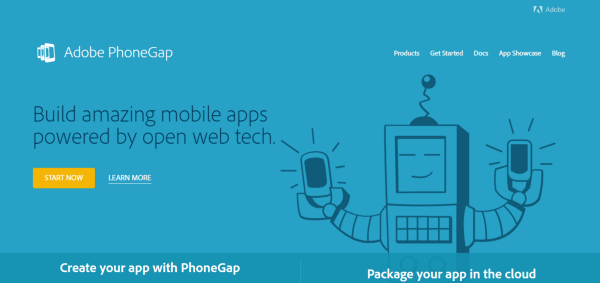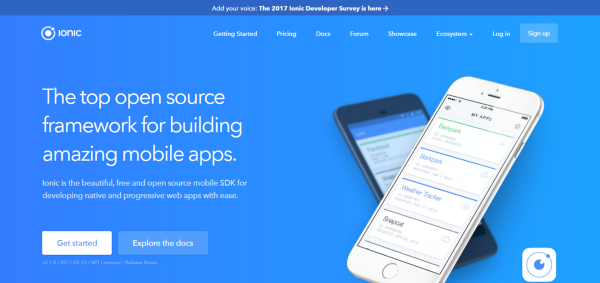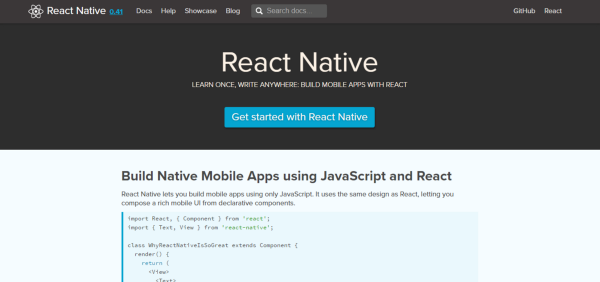As consumers, we are overwhelmed with choice when it comes to satisfying our shopping needs. Giant retailers like Amazon and eBay carry almost everything we could want; delivered right to your front door.
The popularity of online shopping only continues to grow as brick and mortar retailers take their businesses online. The challenge for these growing small businesses? Figuring out how to boost business and increase web traffic without burning through your entire budget.
Gone are the days when an SEO strategy alone would drive traffic to your website. In today’s digital economy, websites need to be creative and unique to generate traffic in a cost-effective way. To stand out from the crowd, ecommerce businesses need to rely on standing out from their competition.
Tap into the power of influencers
With so many “Insta-famous” celebrities harnessing the power of social media, consider looking for organic ways to tap into their influence. A Shopify study found that Facebook was the dominant source that drove social traffic and sales to e-commerce sites, with Instagram providing brands with 25 percent more engagement than any other social platform.
You’ll want to target influencers who are viewed as industry experts and have built a loyal following to promote your brand. Consider providing influencers with a sample or trial of your product or services and if they want to endorse you, provide them with a custom URL to place in a blog or social media post that redirects their followers back to your website.
When brands tap into influencer networks to speak on their behalf, posts shared by trusted influencers converted at 3x-10x higher rate than offers sent by the brand itself. Additionally, customers who were acquired through social influencer efforts saw a 37 percent retention rate compared to traditional marketing efforts.
Use not-com domain name
With so many businesses jumping on the web, the dot-com space is becoming increasingly crowded with long and confusing URLs. One way to carve out your own unique digital nook is to ditch the dot-com and go for a name that’s fun and more descriptive of what you actually do — ‘dot-style’ (.style), ‘dot-life’ (.life) or ‘dot-boutique’ (.boutique) are a few examples.
Two companies taking full advantage of creative, eye-catching domain name endings are TheWrap.life, a fashion brand, and Driftaway.coffee, a subscription-based service that delivers freshly roasted coffee right to your doorstep. Both New York City businesses found their domain names while looking for a way to be more memorable to customers.
Nnenna Stella, owner of TheWrap.life, told Internet Retailer in early 2016 that her customers take note of the quirky domain name that she picked when she redesigned her website last year.
Previously ShopWrapLife.com, she believes the new URL is much more concise and to the point. “My URL is more memorable, so I like when it gets noticed,” Stella told me. “If someone has a ‘not-com,’ I’m always more intrigued as to what they are creating.”
A concise yet descriptive domain name not only boosts your search engine marketing but is also a great way to tell the world who you are and what you do. In the ecommerce space, every little detail counts when it comes to setting your brand apart from your competitors.
Provide valuable content
As consumers, we are overwhelmed with choice when it comes to satisfying our shopping needs. Giant retailers like Amazon and eBay carry almost everything we could want; delivered right to your front door.
The popularity of online shopping only continues to grow as brick and mortar retailers take their businesses online. The challenge for these growing small businesses? Figuring out how to boost business and increase web traffic without burning through your entire budget.
Gone are the days when an SEO strategy alone would drive traffic to your website. In today’s digital economy, websites need to be creative and unique to generate traffic in a cost-effective way. To stand out from the crowd, ecommerce businesses need to rely on standing out from their competition.
Tap into the power of influencers
With so many “Insta-famous” celebrities harnessing the power of social media, consider looking for organic ways to tap into their influence. A Shopify study found that Facebook was the dominant source that drove social traffic and sales to e-commerce sites, with Instagram providing brands with 25 percent more engagement than any other social platform.
You’ll want to target influencers who are viewed as industry experts and have built a loyal following to promote your brand. Consider providing influencers with a sample or trial of your product or services and if they want to endorse you, provide them with a custom URL to place in a blog or social media post that redirects their followers back to your website.
When brands tap into influencer networks to speak on their behalf, posts shared by trusted influencers converted at 3x-10x higher rate than offers sent by the brand itself. Additionally, customers who were acquired through social influencer efforts saw a 37 percent retention rate compared to traditional marketing efforts.
Use not-com domain name
With so many businesses jumping on the web, the dot-com space is becoming increasingly crowded with long and confusing URLs. One way to carve out your own unique digital nook is to ditch the dot-com and go for a name that’s fun and more descriptive of what you actually do — ‘dot-style’ (.style), ‘dot-life’ (.life) or ‘dot-boutique’ (.boutique) are a few examples.
Two companies taking full advantage of creative, eye-catching domain name endings are TheWrap.life, a fashion brand, and Driftaway.coffee, a subscription-based service that delivers freshly roasted coffee right to your doorstep. Both New York City businesses found their domain names while looking for a way to be more memorable to customers.
Nnenna Stella, owner of TheWrap.life, told Internet Retailer in early 2016 that her customers take note of the quirky domain name that she picked when she redesigned her website last year.
Previously ShopWrapLife.com, she believes the new URL is much more concise and to the point. “My URL is more memorable, so I like when it gets noticed,” Stella told me. “If someone has a ‘not-com,’ I’m always more intrigued as to what they are creating.”
A concise yet descriptive domain name not only boosts your search engine marketing but is also a great way to tell the world who you are and what you do. In the ecommerce space, every little detail counts when it comes to setting your brand apart from your competitors.
Provide valuable content
As consumers, we are overwhelmed with choice when it comes to satisfying our shopping needs. Giant retailers like Amazon and eBay carry almost everything we could want; delivered right to your front door.
The popularity of online shopping only continues to grow as brick and mortar retailers take their businesses online. The challenge for these growing small businesses? Figuring out how to boost business and increase web traffic without burning through your entire budget.
Gone are the days when an SEO strategy alone would drive traffic to your website. In today’s digital economy, websites need to be creative and unique to generate traffic in a cost-effective way. To stand out from the crowd, ecommerce businesses need to rely on standing out from their competition.
Tap into the power of influencers
With so many “Insta-famous” celebrities harnessing the power of social media, consider looking for organic ways to tap into their influence. A Shopify study found that Facebook was the dominant source that drove social traffic and sales to e-commerce sites, with Instagram providing brands with 25 percent more engagement than any other social platform.
You’ll want to target influencers who are viewed as industry experts and have built a loyal following to promote your brand. Consider providing influencers with a sample or trial of your product or services and if they want to endorse you, provide them with a custom URL to place in a blog or social media post that redirects their followers back to your website.
When brands tap into influencer networks to speak on their behalf, posts shared by trusted influencers converted at 3x-10x higher rate than offers sent by the brand itself. Additionally, customers who were acquired through social influencer efforts saw a 37 percent retention rate compared to traditional marketing efforts.
Use not-com domain name
With so many businesses jumping on the web, the dot-com space is becoming increasingly crowded with long and confusing URLs. One way to carve out your own unique digital nook is to ditch the dot-com and go for a name that’s fun and more descriptive of what you actually do — ‘dot-style’ (.style), ‘dot-life’ (.life) or ‘dot-boutique’ (.boutique) are a few examples.
Two companies taking full advantage of creative, eye-catching domain name endings are TheWrap.life, a fashion brand, and Driftaway.coffee, a subscription-based service that delivers freshly roasted coffee right to your doorstep. Both New York City businesses found their domain names while looking for a way to be more memorable to customers.
Nnenna Stella, owner of TheWrap.life, told Internet Retailer in early 2016 that her customers take note of the quirky domain name that she picked when she redesigned her website last year.
Previously ShopWrapLife.com, she believes the new URL is much more concise and to the point. “My URL is more memorable, so I like when it gets noticed,” Stella told me. “If someone has a ‘not-com,’ I’m always more intrigued as to what they are creating.”
A concise yet descriptive domain name not only boosts your search engine marketing but is also a great way to tell the world who you are and what you do. In the ecommerce space, every little detail counts when it comes to setting your brand apart from your competitors.
Provide valuable content
Content marketing is the big buzzword of 2016 but it’s more than putting words on a page and calling it a “blog.” In order to reap the benefits of content marketing, your business needs to create valuable content that engages with your customer.
More than 80 percent of companies use some sort of content strategy but only 35 percent have an actual strategy in place to track their content efforts. For your ecommerce site, consider creating a blog that features your customers and the stories behind why they choose your brand over others. But before you start crafting a WordPress blog or start posting to your Medium account, take time to craft content that is actually worth reading. Your blog content should be highly targeted and incorporate some type of SEO strategy if you expect your content to drive results.
For example, Suyog Mody and Anu Menon, the co-founders of Driftaway.coffee, created their own “Coffeecademy,” a blog dedicated to all things coffee. Coffeecademy is hosted on their unique, branded URL and covers a variety of coffee-related topics for readers to use including the difference between the types of roasts and how to prepare your coffee at home.
“We knew that using the ‘dot-coffee’ website address would be much easier and much more straightforward in terms of telling people exactly what our brand is,” Mody said.
You don’t need to be the next Amazon or corporate giant to drive traffic to your ecommerce website; there are plenty of unique strategies to catch the eye of potential customers: opt for a unique and memorable domain name, strengthen your content marketing strategy and utilize social influencers to do the majority of your guerilla marketing.
Whatever strategy you choose, focus on differentiating yourself from your competitors and committing yourself fully to an action plan.




































